
Breathlessness on its own can make walking, bending, kneeling, and other physical tasks exhausting and uncomfortable. And then when you add other COPD symptoms into the mix, like coughing, wheezing, muscle weakness, and fatigue, daily responsibilities like cooking can sometimes seem like too much to handle.
Because of this, conserving energy is often a necessity for COPD patients, especially when they experience flare-ups, exacerbations, or begin to lose their physical mobility as the disease progresses. That's when it's time to start looking into effort- and time-saving tools and techniques and ways to simplify and streamline daily tasks.
Nowhere is this more important than when it comes to food and cooking. Diet is a vitally important part of staying healthy with COPD, but it's also easy to neglect when you're not feeling well. Continuing to purchase and prepare healthy, whole meals can get extremely difficult when you're restricted by limited strength and energy every day.
That's why, in this article, we're going to help you find ways to continue shopping, cooking, and preparing healthy meals in spite of the difficulties that come along with having COPD. We'll show you how planning your meals and using a variety of practical tools and techniques can significantly reduce the amount of time and effort you have to spend shopping and preparing home-made food.
We'll teach you some practical shortcuts for meal planning and preparation, show you how to save energy cooking and cleaning, and introduce you to food-related products and services designed to help people with limited mobility. So without further ado, continue reading to learn about 27 useful tools and techniques you can use to simplify grocery shopping, meal planning, and cooking with COPD.
Tools & Techniques for Easy Meal Planning
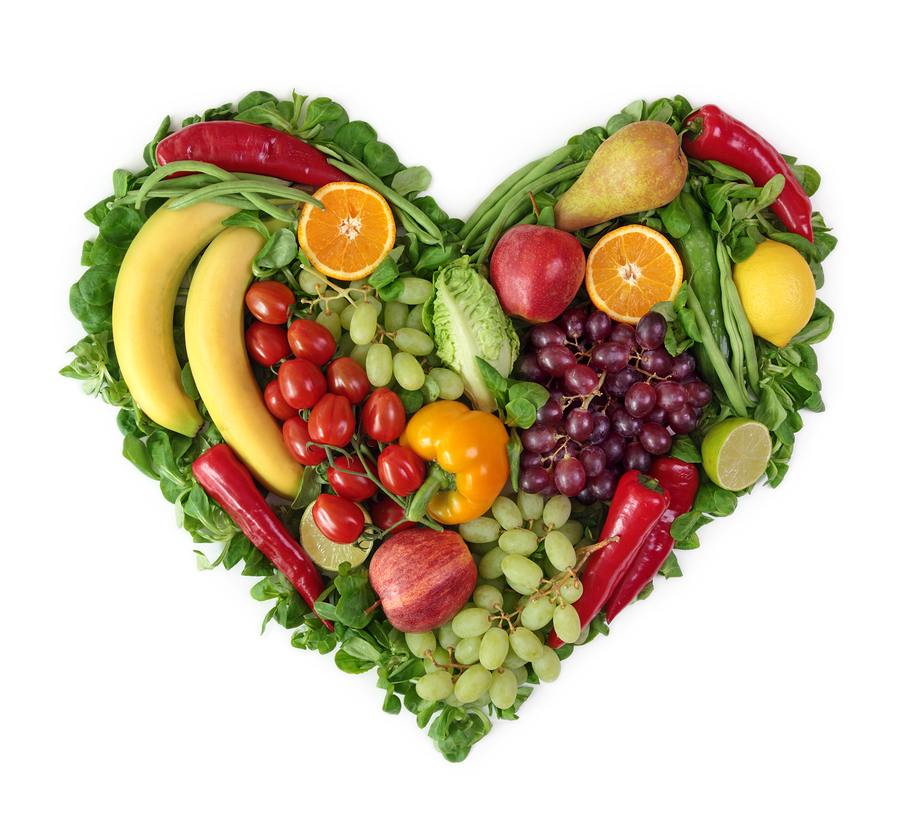
Planning ahead is the cornerstone of efficient cooking. Without a weekly meal plan, shopping and preparing meals is much more stressful and you're more likely to just give up and opt for processed or fast foods.
On the other hand, putting a little extra effort into scheduling your meals helps to streamline the entire shopping, food preparation, and cooking processes. This section will give you a variety of practical tips to help you successfully build the habit of planning your meals ahead for every week.
Writing Your Meal Plan

It might seem like a pain, but taking the time once a week to sit and write down every meal you're going to eat is guaranteed to save you time and effort in the long run. It streamlines shopping, simplifies cooking, and helps you fit healthy, homemade meals into your busy week.
When planning your meals, make sure you consider how much time you have each day and do your best to be realistic. Always have a couple of quick-fix or pre-made meals in mind as a contingency plan for when your schedule changes or you just don't have enough time to cook.
Once you get into the habit of meal planning, you'll start to notice a myriad of benefits. It will remove the stress of wondering “what can I make for dinner?” every evening, and saves time when it's time to make your shopping list.
If you follow a meal plan, you won't find yourself without the ingredients you need to make dinner, because you'll know exactly what groceries you need and you can shop for all your meals for the week ahead of time. By making things as easy for yourself as possible, it will also be easier to stay committed to making home-cooked meals, and easier to resist unhealthy, lazy options like fast food.
Here are some additional tips for weekly meal planning:
- Record your meals in a weekly schedule or calendar so you can easily remember and keep track of your meal plan
- Plan the most difficult or time-consuming meals for days when you have fewer activities and are less likely to breathless or worn out.
- Avoid having to cook every single day by planning for leftovers or heating up make-ahead meals (prepared ahead of time).
- Plan no-cook meals like sandwiches and salads for busy days or use them as a fall-back for when your COPD symptoms act up.
- Plan slow cooker meals for days when you don't have time for a lot of preparation or cooking. Simply throw the ingredients in the pot in the morning, and you'll have a hot, delicious meal waiting for you at the end of the day.
- Make your shopping list while you're planning your meals for the week. That way, you can add all the ingredients you need for your meals to your shopping list and take care of two birds with one stone.
Keep Track of Recipes
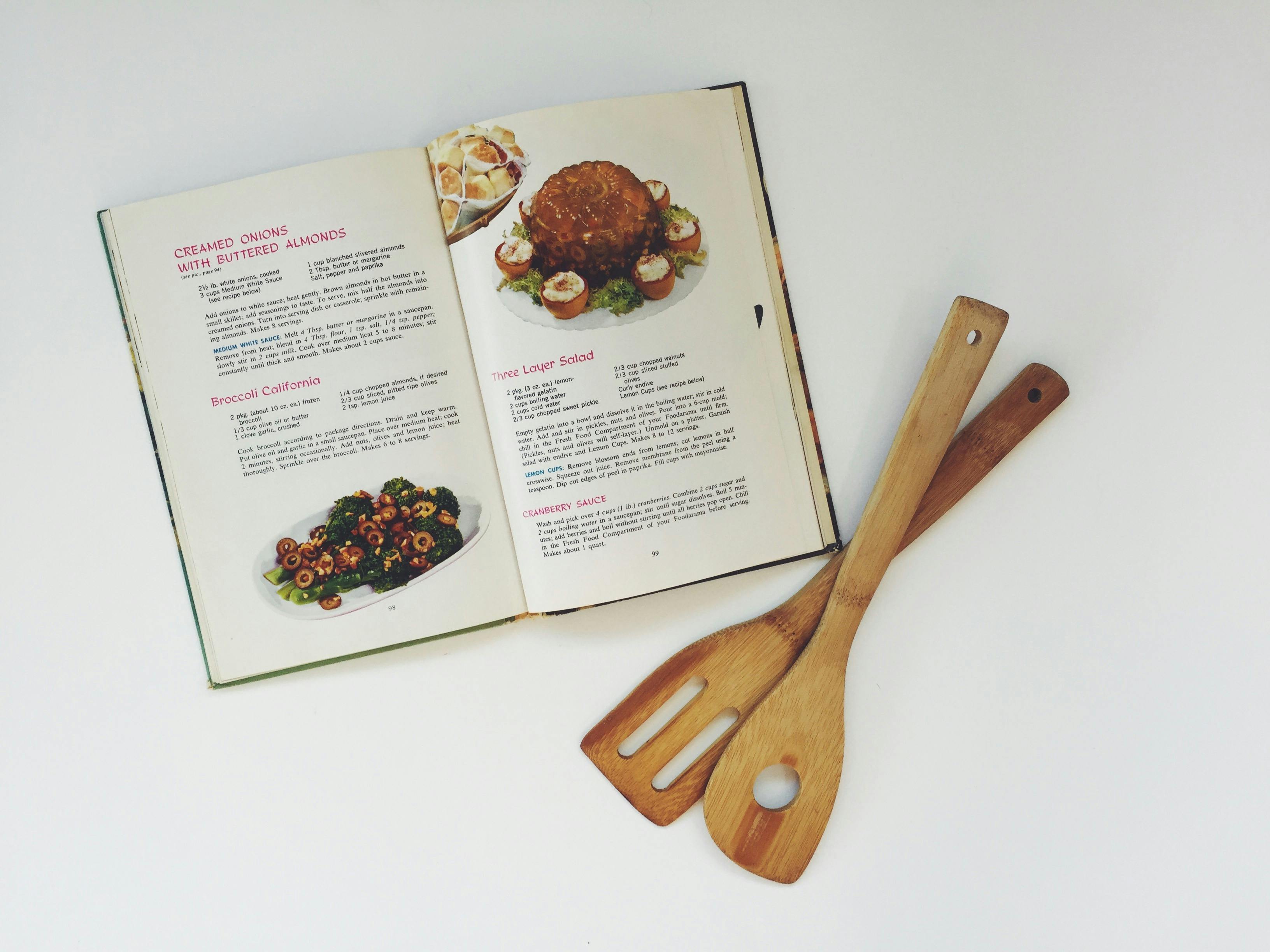
It's hard to plan your meals if you don't know what to make. That's why building up a collection of your favorite recipes can really help you out.
If you often have trouble thinking of what to make or you're getting bored with your usual meals, it might be time to go shopping for a new cookbook or two. Look for cookbooks with practical recipes that appeal to your tastes and aren't too complex for you to make. Mark your favorite recipes with post-it notes or copy them into a separate notebook so you can easily find and flip through the best recipes.
It's also a good idea to spend some time searching online for recipes and recipe websites that you like. Look for themed recipe blogs that focus on types of food you enjoy and bookmark any sites or single recipes that you want to keep.
You can also use a note-taking and bookmark-organizing application like Evernote to save and keep track of any recipes you find on the web. That way, you can sort your recipes by category and easily track down any recipe you've saved.
Plan Around Themes

Assigning a theme or main ingredient to different days of the week can take some of the pressure and hassle out of meal planning. It could be any theme you want; you could try taco Tuesdays, fish Fridays, soup Sundays, or casserole Mondays. Whatever you choose, it will narrow down your options and make it easier to pick out meals for the week.
But just because a day is dedicated to a particular type of meal doesn't mean you have to eat the same thing every time. Instead of preparing the same boring meal week after week, use your themed days as an excuse to try out new recipes or variations. For taco tuesdays, for example, you could try a different type of taco every week (e.g. beef tacos, fried fish tacos, veggie tacos, chicken tacos, etc.).
Tools & Techniques to Make Shopping Easier
The long, winding path through the grocery store can be exhausting if you have COPD. Luckily, there are plenty of ways to reduce the amount of time you have to spend shopping for food and supplies.
Whether you suffer from limited mobility or simply need to conserve energy when you're feeling breathless and fatigued, simplifying and streamlining your grocery trips can make a huge difference in your life. Take a look at some of the following tips and techniques for getting the groceries you need with less time, effort, and hassle.
Plan Your Route

If long grocery shopping trips leave you exhausted and breathless, then you should try to keep them as short and efficient as possible. The best way to do this is to have a complete list of everything you need before you go, organized in the order you will encounter the items at the grocery store.
As long as you know the store's general layout, planning your route ahead of time shouldn't be difficult to do. Simply do your best as you write your list to arrange the items into categories (e.g. produce, dairy, and frozen) and put them in roughly the same order as they occur in the store.
This way, you can save energy by taking the shortest path possible through the aisles while still getting everything you need. It also greatly reduces your likelihood of having to backtrack and walk all the way across the store for items you skipped over or forgot.
Shop Once

Almost nothing is more frustrating than arriving home from a grocery trip with more than you need and realizing you forgot the items that you went there for. Then, you either have to make do without, or muster up the energy to make another journey out to the store.
That's why you should never set foot in a grocery store without having a plan. Taking some time to sit down and make a list is absolutely essential for making your shopping trips efficient and worthwhile.
First, take a couple minutes to write down all the meals you have planned for the week and the ingredients you'll need to make them. Then, take a look in your fridge, freezer, and pantry to see what ingredients you have and what ingredients you'll need to get.
You should also make it a habit to check your cabinets for how much of any important food staples, like flour, herbs, rice, and canned goods that you have left. If you're running low on anything, it's in your best interest to buy more before you run out so you don't find yourself having to make a last-minute trip to the store on a later date.
Take Advantage of Local Grocery Store Pickup
 |
| Photo by Joe Goldberg |
Did you know that many grocery stores have a service where they'll pick out your groceries for you, saving you the walk through the store? It's a great way to save energy if all of the walking, lifting, and stooping that grocery shopping requires makes you feel too exhausted and breathless to shop.
Depending on the store, you can either give them a list of the items you need or directly order them online. Then, all you have to do is drive up to the store, and employees will load up all your bags in your car for you.
Get Your Groceries Delivered to Your Door

Many grocery stores also offer delivery services you can use to get your groceries brought right to your house for a fee. This allows you to get all of your shopping done without ever having to leave your home.
There are also many online stores you can use to order groceries for delivery straight to your door. Amazon Prime Pantry, for instance, has a massive selection of groceries and cooking items to choose from and you can get most of them delivered to you in just two days if you pay the annual membership fee for Amazon Prime.
Subscribe to a Local CSA
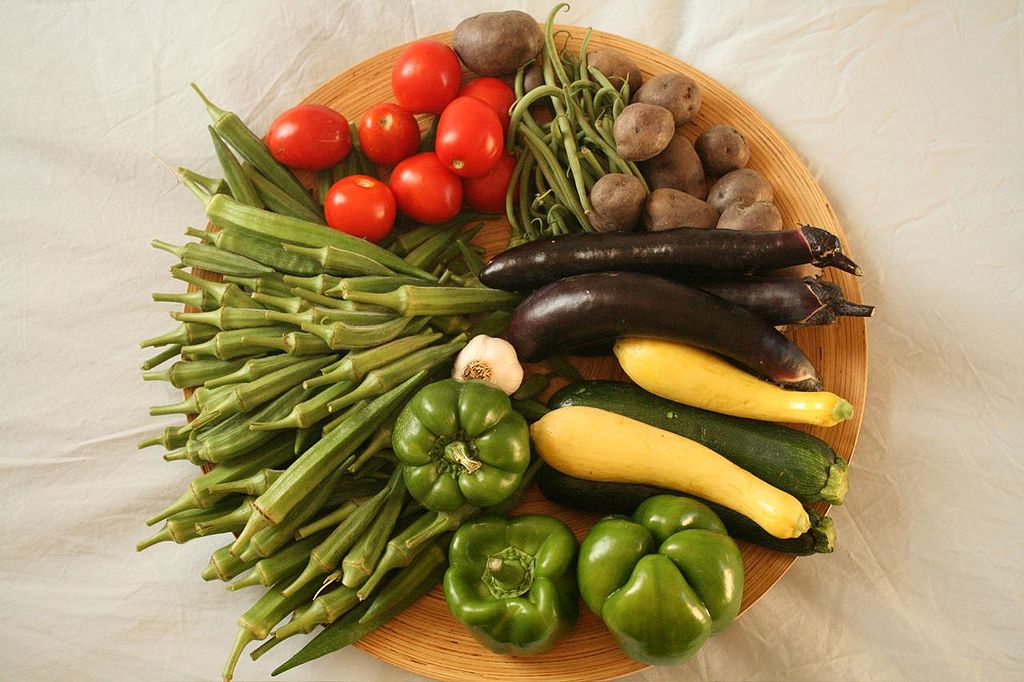
Being part of a community Supported Agriculture (CSA) program is a great way to support local agriculture and get fresh, nutritious produce during the summer and fall.
It works like this: You pay an annual membership fee that is used to support a local farm. Then, during the growing season, you will receive regular boxes of fresh fruits and vegetables grown on that farm—your “share” of the harvest in return for your investment.
Most of the time, you can pick up your box weekly at one of a few pickup centers in your city. Most CSA's will get you a box of fresh produce every week during the summer and fall, but it depends on how your local CSA works and what kind of membership you pay for.
CSA's are a great way to work more fruits and veggies into your diet without having to pick them out yourself. All you have to do is pick up your box of produce, and you'll have most if not all of your fresh fruits and veggies that you need for the week.
Visit Local Harvest's website to see if there's a CSA program that delivers to your area.
Stock Extras

Many non-perishable foods can keep for months, or even years unopened. Use this to your advantage and stock your home with extras of all the non-perishable items you use on a regular basis.
That way, you don't have to worry about running out of ingredients as quickly and can make fewer trips to the store. It can also save you a great deal of money if you take advantage of sales and special offers or buy things in bulk.
Here are some examples of common non-perishable food items that you can stock for months or years before you use them:
- Sugar
- Flour
- Dry beans
- Rice
- Pasta
- Baking powder and baking soda
- Canned goods
Tools & Techniques to Make Cooking Easier
Simplify Your Cooking Prep Process
Oftentimes, gathering and preparing ingredients is the most difficult part of cooking. Chopping veggies, measuring ingredients, and mincing garlic not only takes time, but saps your valuable strength and energy as well.
Here are some tips to help you reduce the amount of time and effort you put toward preparing ingredients for meals.
Rearrange Your Cooking Space

Many cooking inefficiencies stem from a messy or poorly organized kitchen. If you take some time to tidy up your cooking space and arrange your kitchen supplies for maximum utility, you can noticeably reduce the amount of hassle and time it takes to cook.
For example, put items and ingredients you use often front and center in your cabinets and make sure everything is within easy reach. Have a stool handy to help you reach higher shelves and use a grabber tool to avoid bending down for items in lower cabinets and drawers.
Prepare Ingredients Ahead of Time
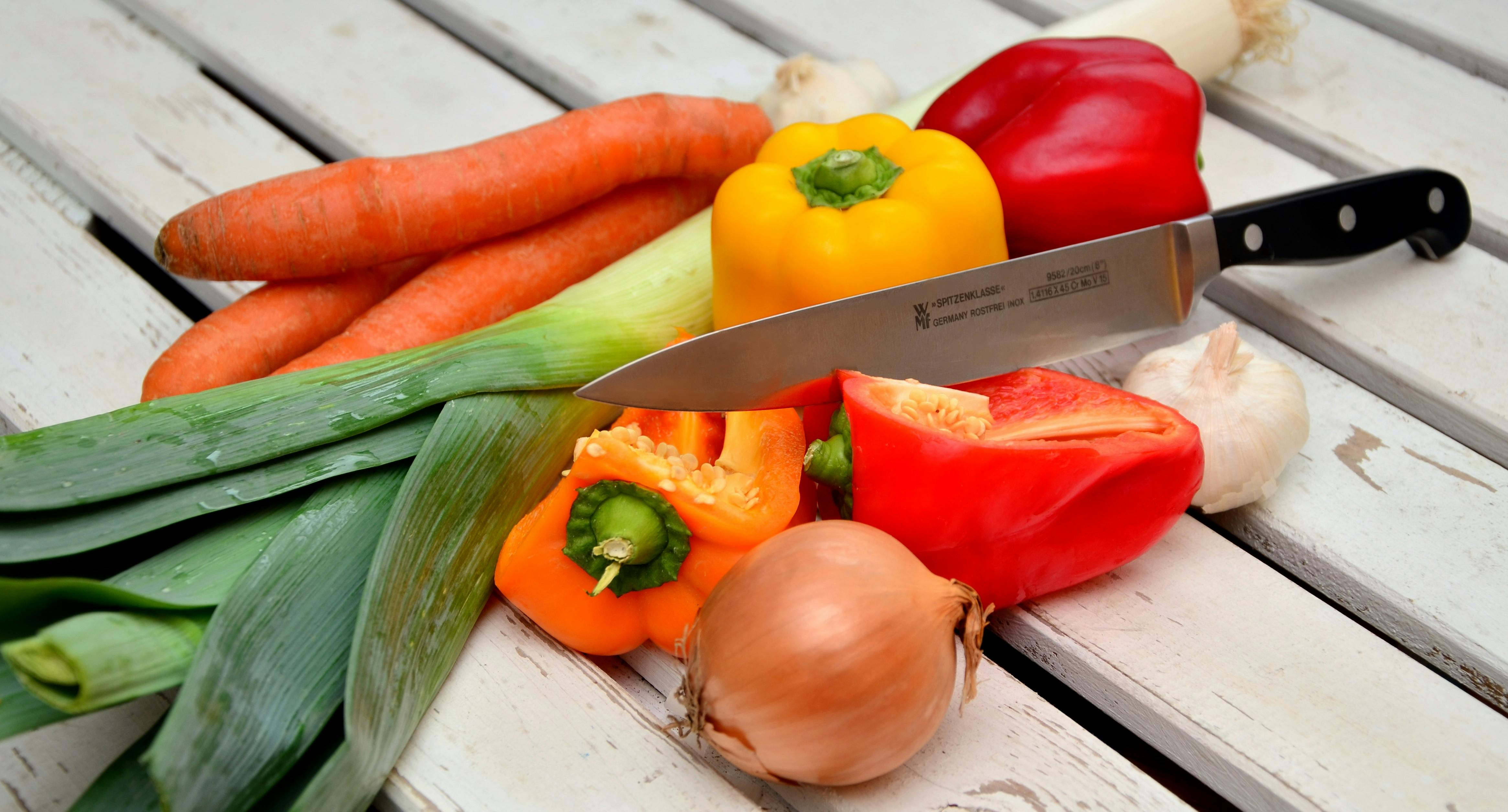
Instead of doing all your prepping and cooking at once, which can be exhausting, split them up and do them at different times. For example, you could prepare the ingredients for your dinner in the mornings and then cook in the evening, or pre-chop lots of fruits and veggies on the weekend, when you have some extra time and energy.
It can also help to make large batches of meal staples like rice, beans, pasta, or potatoes ahead of time to use throughout the week. If you store them in air-tight jars in the fridge, most foods will keep for at least 3-4 days after you prepare them.
Find Recipes with Fewer Ingredients
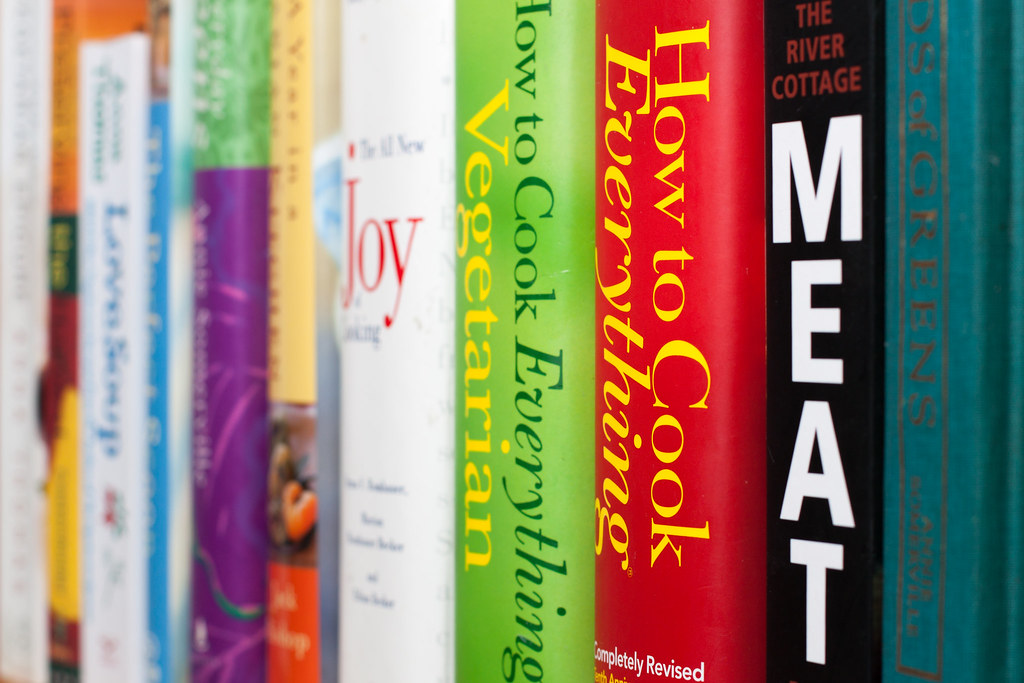 |
| Photo by Tim Sackton |
Have you ever looked up a recipe online, only to find two recipes for the same dish that have vastly different ingredients? That's because there's more than one way to cook just about everything, and some ways are much quicker and easier than others.
That's why you should look specifically for simpler recipes with fewer ingredients if you want to save energy preparing your meals. Fewer ingredients not only means less dicing, mincing, and measuring, but also means fewer trips to the store for fringe ingredients that you don't keep on hand.
There are several popular three-, four-, and five-ingredient cookbooks out in bookstores and online that are full of tasty recipes that are simple to make. There are also websites and food blogs dedicated to simple, easy cooking that are full of recipes that only use a few main ingredients.
Here are some great recipe websites you could try:
- Stone Soup: A blog full of 5-ingredient recipes and simple weeknight dinner inspirations.
- Six Sister's Stuff: A list of 50 easy recipes with six ingredients or less.
- Good Food from the BBC: A list of 40 quick recipes with five ingredients or less.
Buy Pre-Prepared Produce
Most grocery stores have coolers full of pre-washed, pre-chopped, and pre-peeled fruits and veggies in their produce section. While they are a little more pricey than their un-processed counterparts, buying pre-prepped produce can save you several steps and a significant amount of time when you cook.
Drink Green Smoothies

Green smoothies are a great way to get more healthy fruits and veggies in your diet without having to cook. The only prep work you have to do is washing whatever healthy produce you have on hand and tossing it into a blender.
Smoothies are also a great way to use up extra fruit and veggies that are close to going bad. You can make them anytime you're in a pinch for time or make them a regular part of your everyday diet.
You can make fruit or green smoothies with just about whatever you have on hand, depending on your tastes and nutritional needs. Here is an article with 25 easy green smoothie recipes to help you get started.
No-Cook Meals

There will be days when you're just too tired, too breathless, or too lazy to slave over the stove. Luckily, there are plenty of simple, healthy meals you can whip up that don't require any cooking at all.
No-cook meals are often easier to prepare than hot foods and almost always take less time. They are also great for hot, summer days when you don't want to heat up your house by using the stove.
Here are some ideas for no-cook meals and snacks you can try making at home:
- Green Salads: Use whatever veggies and salad greens you have on hand with a light dressing for a delicious meal or side dish. Try adding fruit, nuts, hard-boiled egg, or meats like salmon and chicken for a heartier, more flavorful meal.
- Chickpea Salads: You can make a delicious Mediterranean salad with nothing but canned chickpeas, veggies, and hummus dressing. Add some pre-cooked quinoa to make it even better.
- Sandwiches
- Lettuce wraps
- Tortilla wraps
- Veggie nachos
- Fruit salads
You can also find a variety of no-cook, cold meal recipes online, like on this list from Southern Living.
Single-Pan and Single-Pot Meals
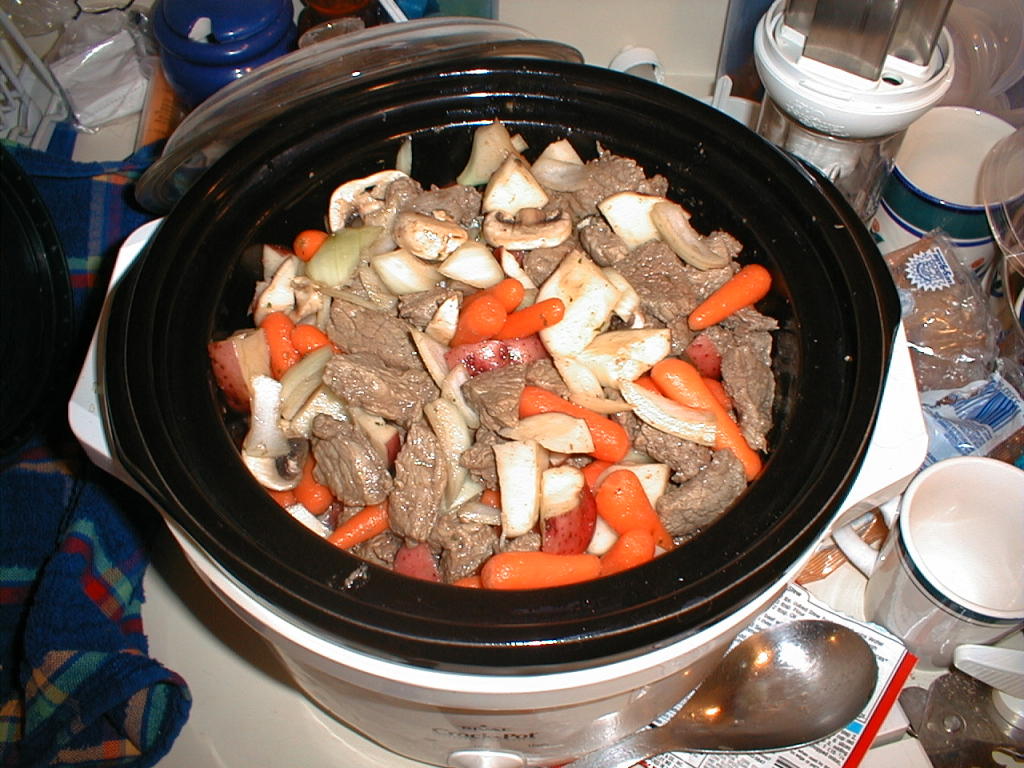
Cooking everything in one big pot or pan can save you a lot of time and energy. It means fewer steps, fewer dishes, and a much simpler cooking process.
Single-pan and single-pot meals can include skillet dinners, casseroles, dutch oven dinners, and slow cooker meals. You can find tons of recipes for one-pan meals online, or easily whip up an improvised meal on your own.
Just about any combination of meat, veggies, and potatoes in a skillet can work to make a delicious, well-balanced meal. Another easy option is to stir-fry whatever vegetables you have on hand and serve them over rice, quinoa, or another healthy grain.
Choose Simple & Easy Foods

If you want to reduce the amount of preparation you have to do to for meals, get the simplest version of the ingredients you can. For example, use frozen or canned carrots instead of peeling and chopping them yourself, or get pre-washed, bagged lettuce instead of a whole head.
Also, consider how difficult a fruit or vegetable will be to prepare before you buy it. For instance, pomegranates, pineapples, and melons take a decent amount of time and effort to prepare for eating. On the other hand, bananas, apples, and berries are require minimal preparation and are ready to eat with minimal hassle.
Just make sure that you continue to include a variety of different kinds of fruits and veggies in your diet. As long as you keep this in mind, you can favor produce that's easier to prepare without sacrificing nutrition.
Here are some examples of simple, healthy, foods that take next to zero effort to prepare:
- Vegetables: baby carrots, broccoli, cauliflower, cucumber, and celery
- Fruits: oranges, mandarin oranges, bananas, berries, plums, apples
- Nuts (buy pre-shelled versions)
- Dried and freeze-dried fruits and veggies
- Canned fruits and veggies
- Frozen fruits and veggies
- Frozen fruit bars
- Peanut butter
- Cheese Cubes
Reduce How Often You Have to Cook
One of the best ways to save energy cooking is to simply cook less often. But that doesn't mean you should eat fast food or processed foods instead; it means finding clever ways to cook more meals at a time and better utilizing leftovers for extra meals.
Here are some tips for reducing how often you have to cook while still eating healthy, whole, home-made meals every day.
Make Large Batches
Why would you cook twice, when you could cook just once for two meals? That's why you should always double your recipes; you'll get double the reward for your effort.
Whether you're cooking pasta, stew, a casserole, or anything else, there's almost never a reason not to double the batch. Then, just refrigerate or freeze the leftovers, and you'll have enough food to feed you and your family for a whole extra meal!
Re-purpose Leftovers
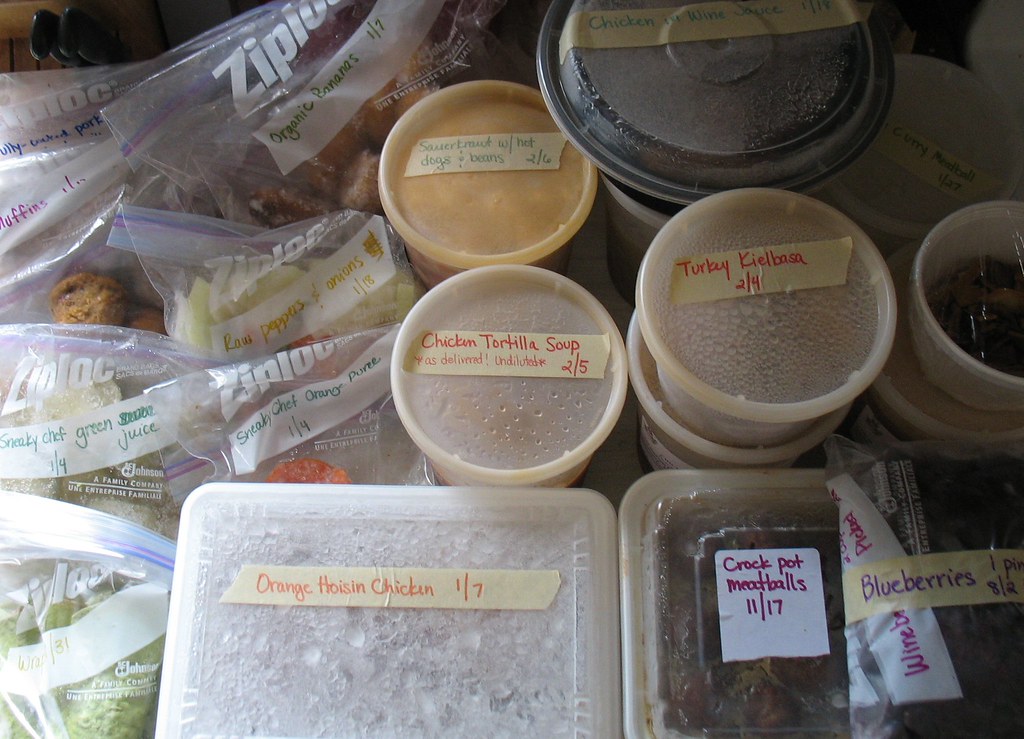 |
| Photo by Lisa Clarke |
Re-purposing leftovers is a way to cook less while making sure your leftovers never go to waste. It can also save you money and reduce the amount of food waste you produce.
For example, if you have leftover spaghetti from a couple days ago that nobody wants to eat, turn it into a delicious baked pasta dish by adding some extra pasta sauce, cream of mushroom, and some cheese on the top. If you have leftover rice, fry it up on a skillet along with any other veggies or meats to make a fresh new meal of fried rice. If you have leftover turkey, you could turn it into a tasty, creamy casserole.
By finding creative uses for food that you've already cooked, you can whip up a whole new meal in no-time that doesn't feel like leftovers at all. Often, most of the work is already done, and you can turn it into a new meal with a fraction of the effort that it would take to start from scratch.
Make-Ahead Meals

Sometimes it's just too hard to muster up the strength to cook a meal after a long day during the week. That's why you have to plan ahead for those days where you feel too breathlessness or fatigued to prepare a whole meal. If you don't, you might just give up and end up choosing a much less healthy option.
That's where make-ahead meals can be life-savers. These are meals that you can put together days or weeks ahead of time and eat later with minimal effort.
Make-ahead meals can be meals that you cook and then freeze for later, or they can be like instant meal mixes like the ones you can get from the grocery store (like Hamburger Helper or Rice-A-Roni). The important difference is that you put together make-ahead mixes at home using whole ingredients, without all of the added unhealthy sugars, salt, and preservatives that go into the store-bought versions.
Do all of your cooking for make-ahead meals on days when your COPD symptoms are well under control, that way you have healthy, delicious meals for days when your symptoms flare up or you're feeling run down. Good times to make make-ahead meals are on the weekends or on random days when you happen to have extra time and strength to spare.
You can find detailed recipes for make-ahead meals in cookbooks or from recipe blogs and websites online. Here are a couple of great online resources with tons of make-ahead meal ideas and recipes to get you started:
- 101 Meals in a Jar Recipes: This list has more than 100 dry mix recipes that you can make ahead and store in jars for months until you're ready to use them. They have recipes for everything, including baking mixes, dressing mixes, soup mixes, and mixes for main courses like chicken, beef, and stew.
- Once a Month Meals: This website is a fantastic source of recipes that you can cook ahead of time and easily store in your freezer until you're ready to cook. Every meal is designed to to freeze well and taste delicious re-heated, and include detailed instructions for proper freezer storage. They also offer a paid membership service that will give you, as they put it, “everything you need to shop, prep, and cook a bulk of your monthly meals in just one day – and freeze those meals for when you want to eat them.”
- Freezer Recipes from Southern Living: This is a huge list of casseroles, pastas, meat dishes, slow-cooker meals, and more that you can make ahead and store in your freezer.
Save Energy While You Cook
If you suffer from COPD-related muscle weakness and fatigue, cooking can be an exhausting, daunting task. Luckily, there are several techniques you can use to reduce the amount of energy and strength you have to use while cooking meals.
Use Lightweight Equipment

Heavy cast-iron pans and glass baking dishes can be nice to use sometimes, but they are extremely heavy to move around. If you suffer from limited strength and mobility, you might benefit from switching you your old, heavy cookware for some lighter options.
For example, you can buy pots and pans made from aluminum, which is much less heavy than iron and many other metals. Additionally, instead of thick glass dishes, try using light, thin metal baking pans that take much less strength to lift.
The same goes for your other dishes, including plates, cups, and storage containers. If possible, try to stock your kitchen with dishes made from lightweight materials like china or plastic melamine instead of thick, heavy glass or stoneware.
Sit While You Prep and Cook
If you are the type who buzzes all around the kitchen as they cook, then you're probably spending a lot of unnecessary energy standing and walking around. If you suffer from limited physical mobility, this can make cooking very difficult, or discourage you from cooking at all.
But with a little pre-preparation and a culinary concept known as mise en place, you can make it possible to sit in one place and prepare your meals without having to get up. Instead of retrieving your ingredients as you go, gather up everything at once before you even begin prepping or cooking.
Mise en place is a French term that roughly translates to “putting everything in its place.” It means getting every ingredient you need for a recipe together in one place, along with all the cookware, knives, cutting boards, and other utensils you need.
If you do this before you cook, then you can plant yourself in one spot and work without having to keep getting up to retrieve a utensil or trek across the kitchen for another ingredient. It also helps simplify and streamline your cooking process, allowing you to do all the chopping and measuring at once and have every ingredient fully prepared before even start to cook.
Outsmart Heavy Pots
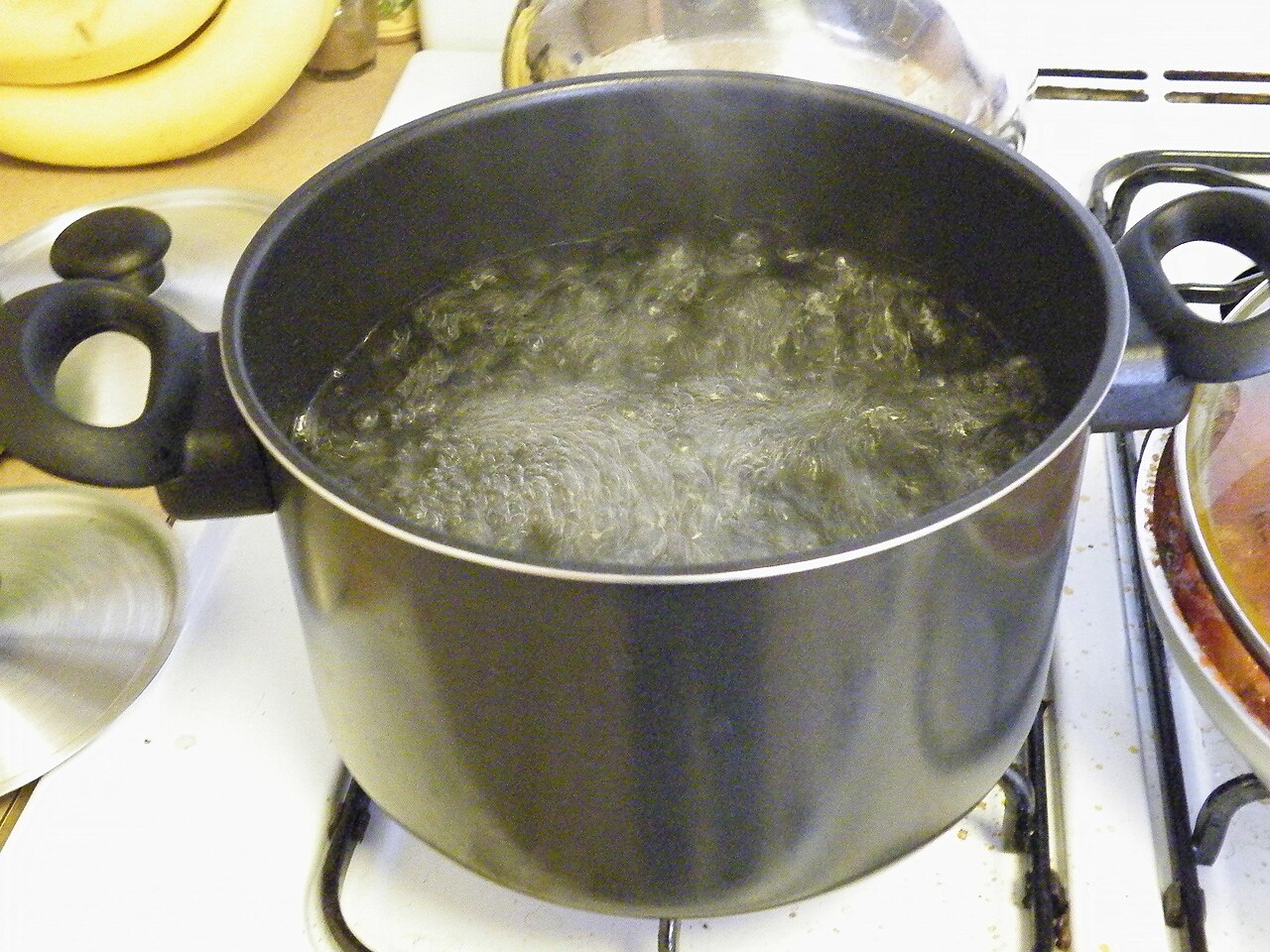
If you find it difficult to lift heavy pots when they're full of water and food, use your smarts to work around it. Look for clever ways to split up heavy tasks into manageable chunks and ways to maneuver heavy cookware without lifting it.
For example, here's a way to avoid ever having to lift a heavy pot of water by hand if you have a sink faucet with a removeable head: When you fill a pot with water for boiling, rest the pot on the counter instead of holding it over the sink. Then, detach the removable faucet head to fill up the pot on the counter, then slide the pot across the counter to the stove.
Here's another example: Instead of dealing with the heavy and unwieldy hassle of straining boiled foods through a colander, use a slotted spoon or colander spoon, instead. That way, you can lift and strain things like pasta by the spoonful instead of trying to lift the pot, the water, and the food all at once.
Purchase Kitchen Aids

There are many tools and appliances made specifically for seniors and people with limited energy and mobility. Consider adding some of the following products to your kitchen to make cooking, prepping, and eating easier to do with COPD:
- Jar and bottle openers: These help you twist off stubborn and stuck lids with less effort.
- A rolling trolley: This is useful for carting food, dishes, and other items around your house without having to carry the weight.
- A food processor: These are great for mincing and pureeing vegetables so you can skip having to do it by hand.
- An electric can opener: There's no need to open cans by hand; electric can opener appliances are easy to use and extremely affordable to buy.
- Package-opening knives: These can help you open up difficult packets and bags of food.
- Specialized chopping boards: You can buy a variety of different kinds of chopping boards with extra bells and whistles to make food prep easier. Some have built-in choppers, pins for spearing pieces of food, or grips to help you hold food in place while you cut it.
- Specialty slicers: You can get a variety of different slicers designed to make cutting certain fruits and veggies into bite-sized pieces much easier. You can find apple slicers, berry slicers, onion slicers, and more at kitchen retail shops and from stores online.
Make Dishwashing More Manageable
If you have severe COPD, cooking can be taxing enough as it is, even without a mound of dishes to tackle once you're done. But if you can reduce the amount of dishes you use and save energy while you do it, cooking might not seem like such a daunting task.
Here are some tips to reduce the amount of time and energy you have to spend on cleaning and putting away dishes.
Skip the Serving Dishes

One way to reduce the number of dishes you have to clean is by omitting serving dishes from your meal routine. Instead, simply serve food out of the same container you cooked it in. It might not look quite as pretty, but it will taste just as delicious!
Soak Dishes As You Go

Instead of piling all your dirty cooking dishes and utensils together and waiting to clean them until after the meal, try soaking them while you eat, instead.
All you have to do is stick a stopper in your sink, add a little dish soap, and fill it up with warm, soapy water. Then, whenever you get finished using a pot, pan, or another dirty dish, simply set it in the sink to soak.
By the time you're done eating, the soaked dishes will be a breeze to clean. Then, at the same time as you're rinsing and loading those dishes into the dishwasher, you can let the plates and utensils you ate with soak, too.
Enlist Help from Family
If you often eat meals with your spouse, children, or other members of your family, enlist their help with dishes after mealtimes. You could assign certain family members the responsibility of doing dishes on certain days, or you could enlist a helper to lift heavy dishes and take some of the work off your hands.
At the very least, ask others to carry their plates from the dining table to the kitchen, that way you won't have to carry stacks of heavy dishes across the room.
Don't Get Discouraged!
When you have COPD, you inevitably have to make compromises and give up on some of the activities you used to be able to do. However, when it comes to eating healthy meals and whole foods, you can't compromise on the quality and nutrition of the food you eat.
Even though shopping, cooking, and cleaning after meals inevitably takes time and energy, there are plenty of ways to make these tasks less tiring. As you've seen from the advice in this article, there are plenty of tools, techniques, and services you can utilize to help you continue to eat fresh, healthy meals in spite of your disease.
It's important not to let your physical limitations paralyze you; there are plenty of reasonable solutions for all the everyday tasks that COPD makes difficult to do. It's just a matter of thinking outside the box and planning ahead, and then putting that plan into action.
That said, there will be hiccups and difficult weeks and times when even the best-laid meal plans fall apart. There will be times when you forget to go to the store, forget vital ingredients, or lack the motivation to prepare home-cooked meals.
The important thing is to not let set-backs like these derail you from your wider goals. Even if you have a bad day, a bad week, or a bad month, simply pick yourself back up and pledge to do better next time.
Nobody's perfect, and sticking to a healthy, home-made diet is notoriously difficult to do. But with some solid determination and a repertoire of practical tools and tricks up your sleeve, you can succeed.


.png)





